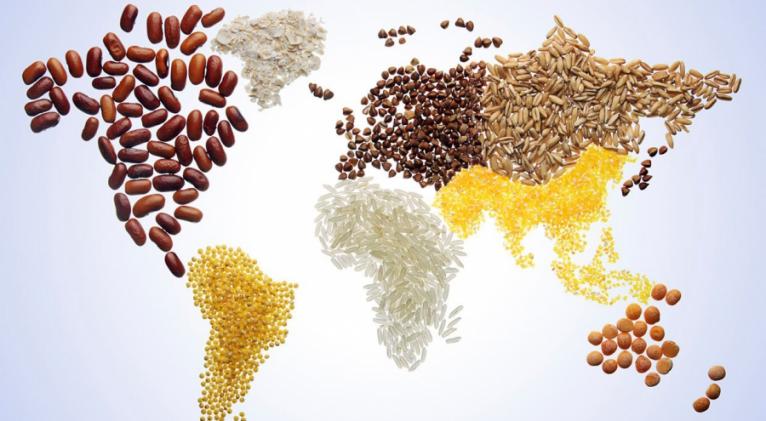The 3 changes that can pave the way for regenerative agriculture
especiales

For years, industrialized agriculture has been focusing on intensifying farming practices, enhancing efficiency and boosting yields to meet the needs of a growing world population. However, this system has come with huge costs: our current food systems are responsible for one-third of total greenhouse gas emissions and have led to soil degradation and loss of biodiversity. Over half of the world’s agricultural land is degraded, resulting in productivity losses worth a staggering $400 billion per year.
By 2050, we will need to feed 10 billion people worldwide, bring our food systems within the planetary boundaries and keep the agricultural model financially viable for farmers. Improving farm resilience is critical for farm profitability, food security and to restore the environment and our ecosystems to help mitigate climate change. But it requires a systemic approach.
Change is possible. Through regenerative farming practices, such as cover cropping with low or no-till, rotational grazing and precision application, the prediction is we can still revert to resilient farming systems that work with nature rather than against it. Furthermore, regenerative farms have been shown to have more reliable and increased yields, higher-margin crops and reduced input costs, translating into a 15-25% return on investment in the long term when transitioning to regenerative farming practices.
A growing group of European farmers already deliver ecosystem services through regenerative farming practices but much more needs to be done to broadly replicate these cases and bring regenerative agriculture to scale. Three key elements are required:
Cross-value chain collaboration to make a match between supply and demand. De-risking the transition for the farmer to make it attractive and achievable. Valuing ecosystem services preferably integral in the pricing by value or other innovative business models.
Have you read?
-
What is regenerative agriculture?
-
How collaboration on regenerative agriculture can strengthen food security
-
Unlocking the potential of regenerative agriculture through public-private synergies
3 changes for regenerative agriculture
1. Cross-value chain collaboration
Farmers want to transition to regenerative agriculture only if there is a business model and a demand for offtake (agreement to buy the produce, preferably for multiple years) that is regeneratively produced. At the same time, there is a growing demand among off-takers, such as food corporations and farmer cooperatives, for regenerative produced commodities. It is, however, essential to note that farmers typically have multiple offtakers, and they can’t grow singular crops regeneratively; instead, they must adopt regenerative practices for part of their land and rotate crops.
The farmer must also be sure they can sell all their regeneratively-produced commodities. Thus, offtakers with different crops from the rotation must collaborate and source collectively through cross-value chain collaborations to facilitate farmers’ transition to regenerative agriculture practices and demand-driven production.

Cross-value chain coordination and collaboration.
2. De-risking the transition for the farmer
Farmers are at the forefront of this transition, with significant changes required to their farmland, accompanied with increased uncertainty, risks and possibly short-term yield decline. Therefore, farmers should be given time and resources to transition to and experiment with regenerative agricultural practices.
Most importantly, risks should be shared at supply chain and food systems levels, not just farmers. One way such risk sharing could be done is by developing new financial products – e.g. bank loans combined with insurance – and food system partners covering initial investment and transition costs such as infrastructure set-up, equipment and training.
Farmers would then have more certainty and fewer financial risks, sharing responsibility with value chain partners and others, making the transition to regenerative agriculture a collective effort encompassing food systems change.
3. Valuing ecosystem services
Ecosystem services are the benefits and resources for society from natural ecosystems, such as pollination, water conservation, biodiversity preservation, soil health maintenance and carbon sequestration.
These services need to be integrally valued in the agro-economic pricing system and markets. Monetizing these ecosystem services and integrating the accompanying payments with the actual product sold should reward farmers for their regenerative farming practices and compensate for investments and initial losses in income, which makes regenerative agriculture more feasible, accessible and profitable.
A systemic transition to regenerative agriculture
There has been significant effort from farmers, food corporations, and farmer cooperatives to transition to regenerative agriculture – Heineken, Danone, and Diageo are testaments to that.
One organization can’t realize the three fundamental changes necessary to enable a sustainable, systemic transition to regenerative agriculture practices for farmers for all their produce. Therefore, EIT Food and Foodvalley, supported by the Food Collective, have initiated the Regenerative Innovation Portfolio European initiative to leverage regenerative agriculture’s potential under the Food Innovation Hub Europe umbrella.
The portfolio will scale and accelerate existing initiatives with new coalition partnerships across the agrifood value chains in European landscapes. The goal is to bring practical solutions for viable business models for farmers transitioning towards regenerative agriculture. The optimal set of practices and conceivable outcomes depend on the landscape context (climate, soil type, commodities, etc.); the portfolio’s core will be organized around landscapes and will be farmer-centric in approach.
These landscapes involve communities of farmers, off-takers and other stakeholders in a specific region willing to adopt regenerative practices covering multiple commodity value chains and connecting to various collaborating offtakers for the sustainable purpose of regenerating landscapes.
According to Geraldine Bernard from Heineken, the Regenerative Innovation Portfolio is a unique opportunity to scale Regenerative Agriculture in Europe and leverage the collective strengths of all stakeholders involved:
“Furthermore, it will ease strategic and on-the-ground collaborations, making it a unique and innovative solution.”














Add new comment